Savoca is a hilltop medieval village perched on a hill overlooking the Ionian coast in Sicily. Savoca is famous for being the filming location of several scenes of The Godfather movie by Francis Ford Coppola. This includes Bar Vitelli and the church of San Nicolò. Read on to discover The 10 Best Things To Do in Savoca!
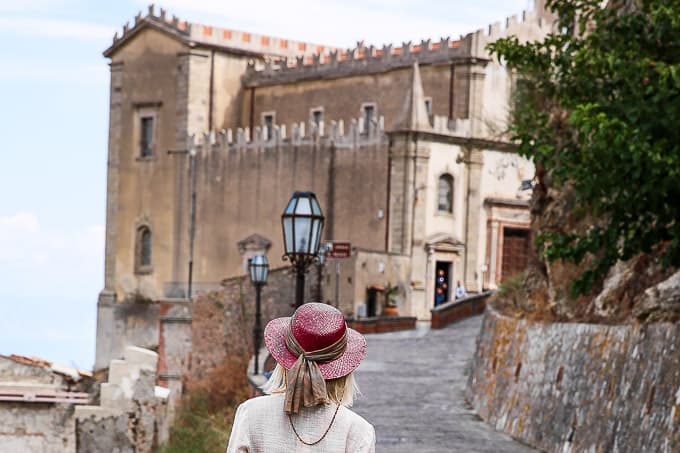
About Savoca
- Savoca is located in the province of Messina in Sicily.
- The village is set high above the Ionian sea. Savoca’s elevation is 300 meters above sea level.
- Savoca is one of Italy’s Most Beautiful Villages (I borghi più belli d’Italia), an association that includes small Italian towns of historical interest and rich cultural heritage.
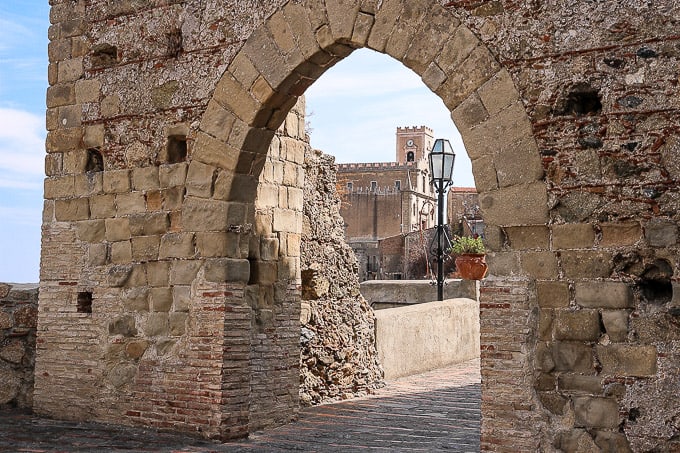
10 Best Things To Do in Savoca
Savoca is a medieval town with quite a few historical churches and structures. Savoca is also world famous for being the filming location of several iconic scenes of The Godfather movie by Francis Ford Coppola. This includes Bar Vitelli where Michael Corleone met his future bride’s father and the church of San Nicolò, where Michael Corleone and Apollonia get married.
The area around Savoca is known for its lush vegetation. It’s filled with citrus groves, vineyards, and olive groves. This quiet village will take your break away and transport you back in time. It’s a great village to explore on foot! Discover The 10 Best Things To Do in Savoca!
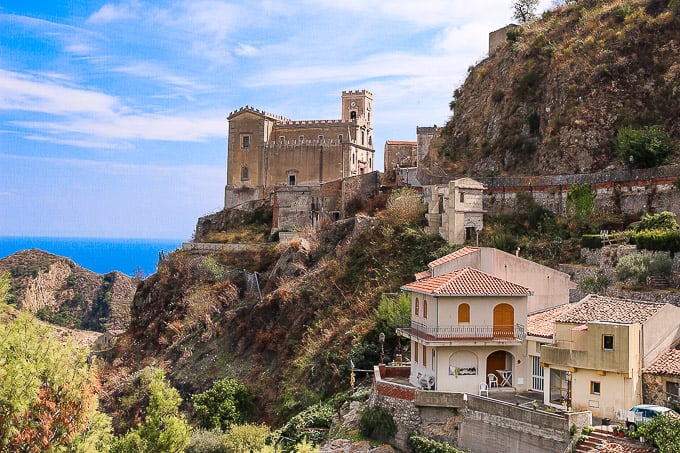
1. Church of San Nicolò
The church of San Nicolò was originally built in the 13th century and used to be decorated with Byzantine-style frescoes. The church was substantially rebuilt in the 15th century and then again in the 18th century. This resulted in a big change to the appearance of the church. The church’s current architectural style resembles a fortress. The current building has a wooden statue of Saint Lucia.
The church of San Nicolò is most famous for being the filming location of The Godfather movie by Francis Ford Coppola. Some of the most iconic scenes set in The Godfather movie, such as the wedding of Michael Corleone and Apollonia, were filmed in this church.

2. Bar Vitelli
Bar Vitelli is located in Palazzo Trimarchi, an 18th-century palace, in Piazza Fossìa, near the Town Hall.
Bar Vitelli is world famous for being the filming location of several scenes of the first Godfather movie by Francis Ford Coppola. In the movie, Michael Corleone fled New York City after starting a mafia war between Italian mob families there. When he arrives to take refuge in Sicily, Michael Corleone falls in love with a Sicilian woman, Apollonia Vitelli. Bar Vitelli is where Michael Corleone ( Al Pacino) meets the cafe owner, the father of his future wife Apollonia. The Bar Vitelli is also the place where Michael Corleone asks Apollonia’s father for his daughter’s hand.
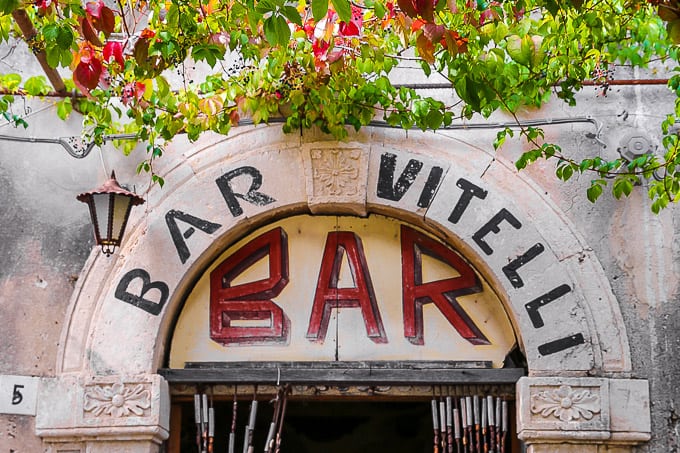
3. Palazzo Trimarchi
Palazzo Trimarchi is an 18th century 2-story palace with a basement. It was built by the Trimarchi family, a wealthy noble Sicilian family. The palace was designed in a Sicilian Neoclassical style. It’s located in Piazza Fossìa, near the Town Hall.
The ground floor of the palace is currently occupied by Bar Vitelli – a famous bar filmed in The Godfather movie.
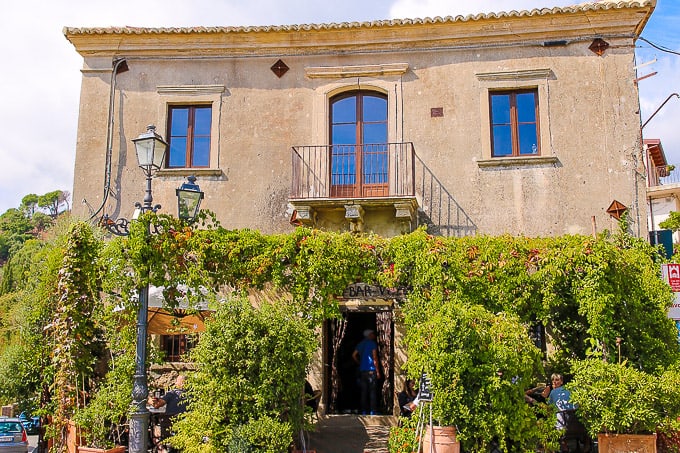
4. Steel Sculpture of Francis Ford Coppola
Not far from Bar Vitelli, there is a small square that offers great views of Savoca and of the Church of San Nicolo. In this square, there is a steel sculpture of The Godfather movie director, Francis Ford Coppola. The statue was created by artist Nino Ucchino.
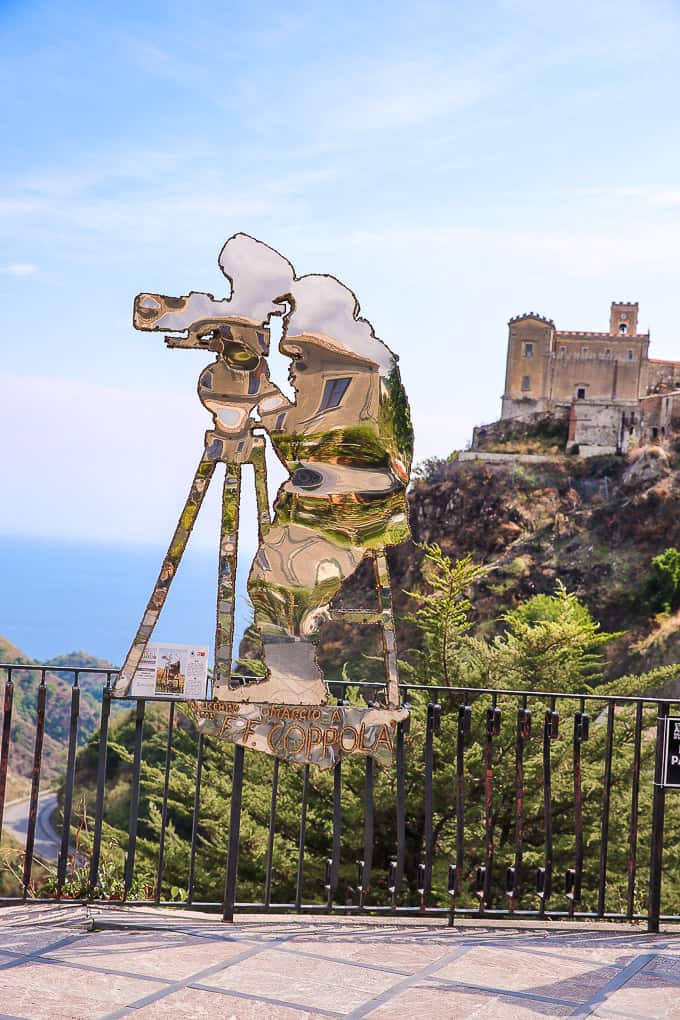
Right next to the sculpture of Francis Ford Coppola is the sculpture of the Talking Donkey. If you add some coins, you would hear hilarious donkey noises.

Both the Talking Donkey and the sculpture of Francis Ford Coppola are located in a great panoramic spot. From this viewpoint, you can get an excellent view of the sea, the coastal area, and the church of San Nicolo in the distance.

5. Porta della Città di Savoca – City Gate to Savoca
When the Normans arrived in Sicily, they built a fortified wall around the city of Savoca sometime around the 12th century. This fortification used to have 2 city gates. These days only one of the city gates remains standing – Porta della Città di Savoca or City Gate to Savoca. The gate looks like a pointed arch and it’s made of sandstone.
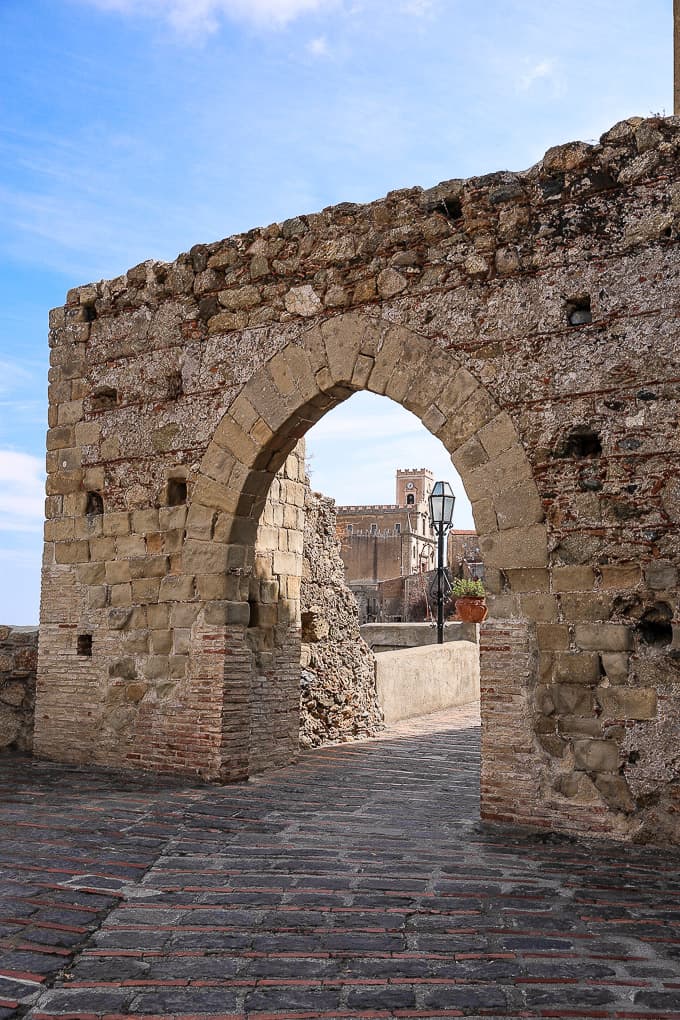
6. The convent and the church of the Capuchins
The convent and the church of the Capuchins (the Order of Capuchin Friars Minor) are located near the historic center of Savoca.
This convent was built in the 17th century on a vast land donated to the city of Savoca by Antonio Crisafulli (a member of the noble Sicilian family) by deed of the Notary Cesare Petrafitta. The convent has 2 floors.
Next to the convent is the church of the Capuchin monastery. The church is dedicated to St. Francis of Assisi. The church houses several important works of art.
The Capuchin convent also houses a crypt with the mummies of the Savoca’s aristocracy.
7. Church of Santa Maria in Cielo Assunta
Church of Santa Maria in Cielo Assunta is the mother church (Chiesa Madre) of Savoca. The construction of the church started in the 12th century, during the time the Normans were in Sicily. Initially, the church had a Norman architectural style.
In the 15th century, the church was largely rebuilt and restored by Pietro Trimarchi, an architect from Savoca. The church acquired the Renaissance architectural style. Finally, between the 16th and 18th century, the bell tower and the rectory were built. The church houses a number of Byzantine frescoes.
8. Church of San Michele
The church of San Michele is a Catholic church in Savoca. It features Gothic style on the outside and Baroque interior. The construction of the church started in 1250 and finished in 1420. The church houses several important artworks of historical value, including frescoes, Baroque altars, and a wooden pulpit. The church also contains the tombs of several local families.
9. Castle of Pentefur
The ruins of the Castle of Pentefur can be seen on one of the two hills in Savoca. This medieval castle dates back all the way to the 6th through the 17th century. The castle has centuries of history, including the Byzantine, Norman and Renaissance periods. The castle was built on top of one of the two hills in Savoca, in a strategic location to defend the city. Only a few ruins remain of the castle, including parts of the wall and the ancient portals that lead to the Castle of Pentefur.
The site of the castle offers some of the most breathtaking panoramic views of the area!
10. Centro Filarmonico (ex Chiesa dell’Immacolata)
The Church of the Immaculate (now a Philharmonic Center) is located on Via San Nicolò. The church was built in the 17th century by The Order of Conventual Friars Minor. This church used to house the tombs of the wealthy local families, including the Trimarchi.
Today, the building is the Municipal Philharmonic Center.
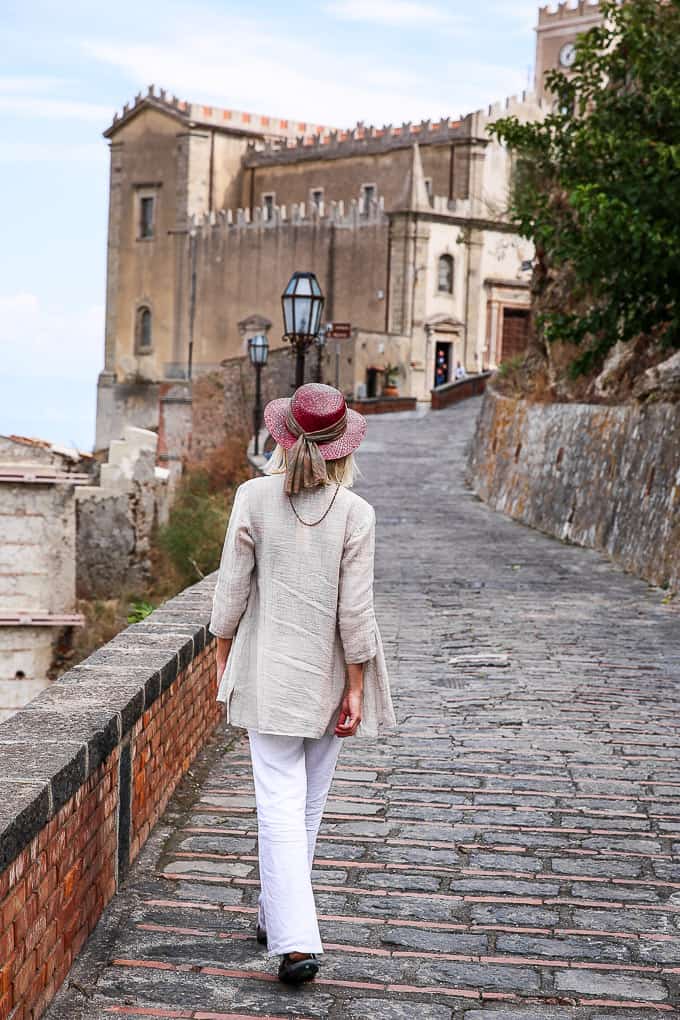
Other Sights
- The church of Calvary stands on the Calvario hill, offering exceptional panoramic views of the surrounding area: the historic center of Savoca, the Ionian sea, even the Mount Etna.
- Palazzo Salvadore is 17th-century palace is in excellent condition. It’s located between Via San Michele and Via Chiesa Madre.
- Palazzo Scarcella dates back to the 17th century. This partially ruined palace is located between Via San Michele and Via Fontana Terra.
The post 10 Best Things To Do in Savoca, Sicily appeared first on Julia's Album.
from Julia's Album http://bit.ly/30YyBD8
via IFTTT
0 comments:
Post a Comment